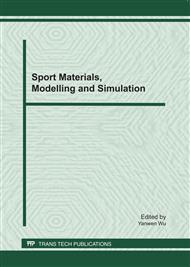p.257
p.261
p.266
p.271
p.277
p.282
p.287
p.291
p.297
Available Bandwidth Measurement Method of High-Speed Network Based on Link Idle Probability
Abstract:
Available bandwidth measurement of network is an important step in network traffic design and assignment as well as network planning. The previous packet pair and packet train technologies based on network bottleneck segment principle can not be used for available bandwidth measurement of high-speed network. Based on analysis of shortcomings of bandwidth measurement method accordance with network bottleneck segment, the paper presented a kind of high-speed network available bandwidth measurement method based on link idle probability and gave specific steps. The method took router as main body and do not need to consider complicated interference of data flow in the network. Simulation test based on OPNET indicates the feasibility of this method.
Info:
Periodical:
Pages:
277-281
Citation:
Online since:
February 2011
Authors:
Price:
Сopyright:
© 2011 Trans Tech Publications Ltd. All Rights Reserved
Share:
Citation:


